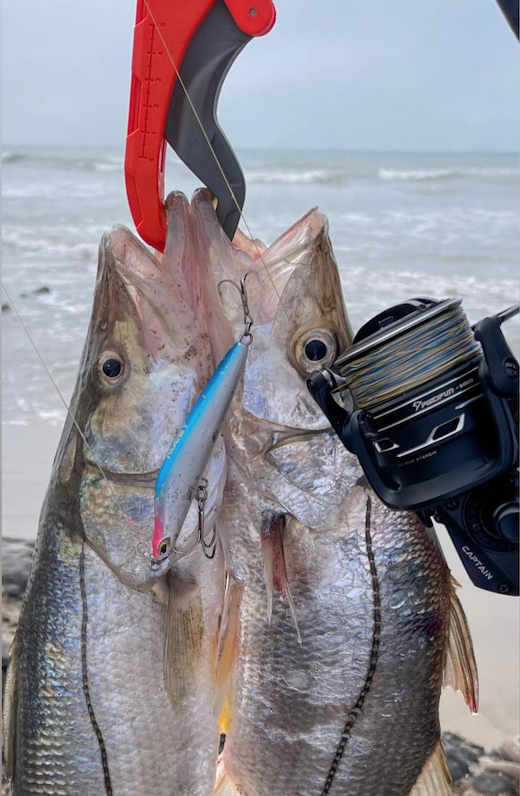The thrill and adrenaline rush one experiences with fishing need not be explained. However, do you know that using the right gear can multiply the thrill experienced? Well, yes. Guided fishing trips in Cabo San Lucas will have you believe that.
Apparently, the motion of water plays an important role in attracting fish. In this guide, we’re particularly going to discuss the types of spinning lures available and how they work individually.
1. Spoons
It was originally a spinning lure resembling spoons in construction. Since its innovation, this lure has undergone several advancements, and it bores the most sophisticated appearance today. In the water, spoons bob and weave like fish that are around the same size as them or even a little smaller. Since spoons are somewhat hefty, they perform better when you need to lead the lures far below the surface and cast them a great distance. The drawback of spoons is that they are frequently delicate to the rate and style of retrieval.
2. Crankbaits
Those that float, whether wooden or plastic, go deep into the water with the aid of specific structural pieces that act in the opposite way of an airplane’s wing. These components might take the form of a plane or a sloping flat on the lure’s top. Many crankbaits are lengthy and may contain two or three sets of hooks.
For practical knowledge, you should once dive into the sea with the best fishing guides in Cabo San Lucas. Some experts advise leading them in such a way that they collide with barriers, which they claim is enticing to predators lurking nearby in ambush. Many trolling fans prefer larger crankbaits, although they may also be used with spinning tackle. Pack a few of those while fishing a large river or lake for walleye, muskie, or northern pike.
3. Soft Baits
The soft baits are fabricated to take up different shapes, such as minnows, lizards, worms, or even frogs, to resemble alive or dead real bait. Given that the bait isn’t big enough to affect the lure’s action, you can feel free to use the bait with any lure. Advanced lures are fabricated with a scent to draw in fish by hitting their olfactory senses.
The drawback of soft baits is that they aren’t quite durable. However, it’s a great option when it’s used by perceiving it as disposal. It’s ideally used for catching bass fish as it can navigate through the overgrown lakes. The best part is it doesn’t drag logs or grass along when you reel it in.
4. Jig Heads
In simple terms, jig heads are big sinkers having a big hook. Mostly, the hook is concealed by the feathers, or the soft bait. Originally, jig heads were used for vertical jigging. However, today they prove to be a great option used in guided fishing trips in Cabo San Lucas for spinning as well. In this instance, most anglers use jig heads with soft baits shaped like a minnow or a worm, which will give the lure a natural play when you retrieve it. Some worms wiggle and have serpentine shapes, while others have fish-shaped bodies that mimic real fish in motion.
5. Poppers
Poppers are special lures used commonly in surface fishing. It floats with a hole in the front, creating a bubbling sound when it’s dragged across the water. Bass anglers mainly swear by the poppers to catch their trophy in a still or slow-moving water bed.
Picking The Right Lures
Before you go on the appropriate lure hunting, it’s essential to first figure out what species you want to focus on. You can also consult the best fishing guides in Cabo San Lucas for recommendations. Never limit yourself to just one lure because, first, you can never be sure what will work on any given day, and second, if you haven’t lost a lure to a log, rock, or the big one that got away, your spinning session is over. You can never have too many lures in your box, according to the majority of anglers.
To catch 95% of your fish, you’ll need to use 5% of your lures, but you’ll have to experiment to figure out what that 5% is. Try different lures—bright or dim, large or little, quick or slow—but don’t switch them out too frequently. Make at least 10 to 12 casts before attempting another method.
Conclusion
The above-mentioned tips were to give you a sense of what you should look for. Remember that the wrong lure at the right place is more favorable than the right rule in the wrong place. Don’t spend too much time indulging in theories. Go out there and try your hands out. Only then you’ll understand what’s the right thing to do.
If you’re looking to embark on guided fishing trips in Cabo San Lucas, there’s no one better than Tag Cabo Sportfishing in the game. We strive to make your journey truly unforgettable. Experience the ultimate luxury charter in the sea for a couple of days. It’s the best make to a special day even better. Professional chefs on board will serve lip-smacking cuisine and top-notch wines to tickle your fancy. Do you wonder what more we offer? Well, then reach out to us via mail at tagsportfishing@gmail.com.

